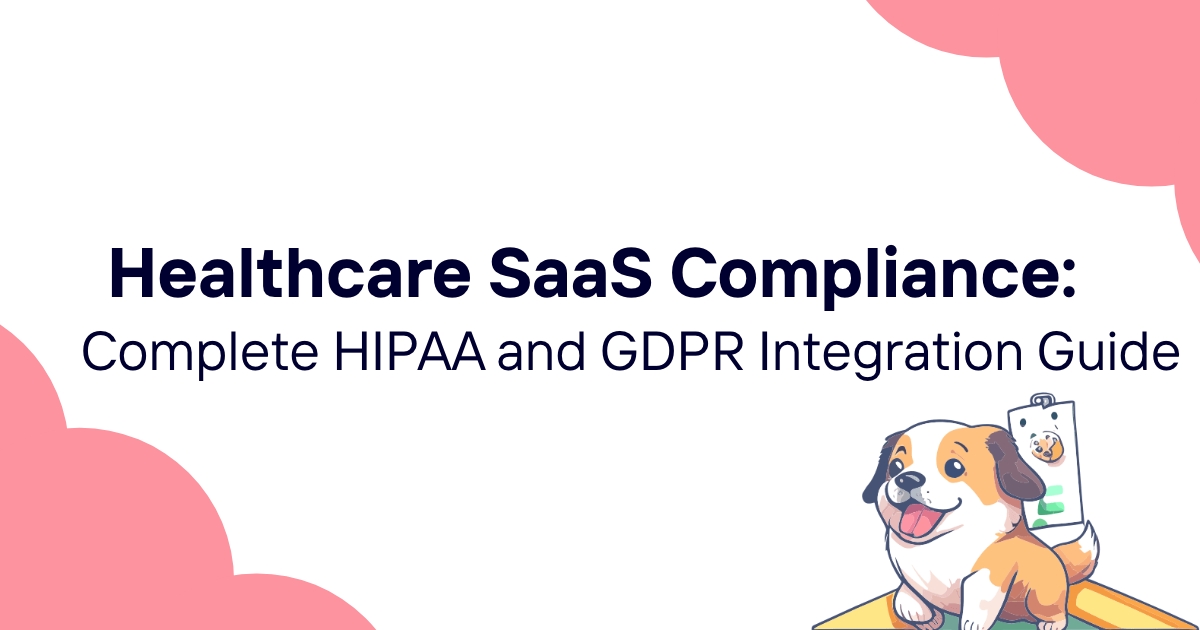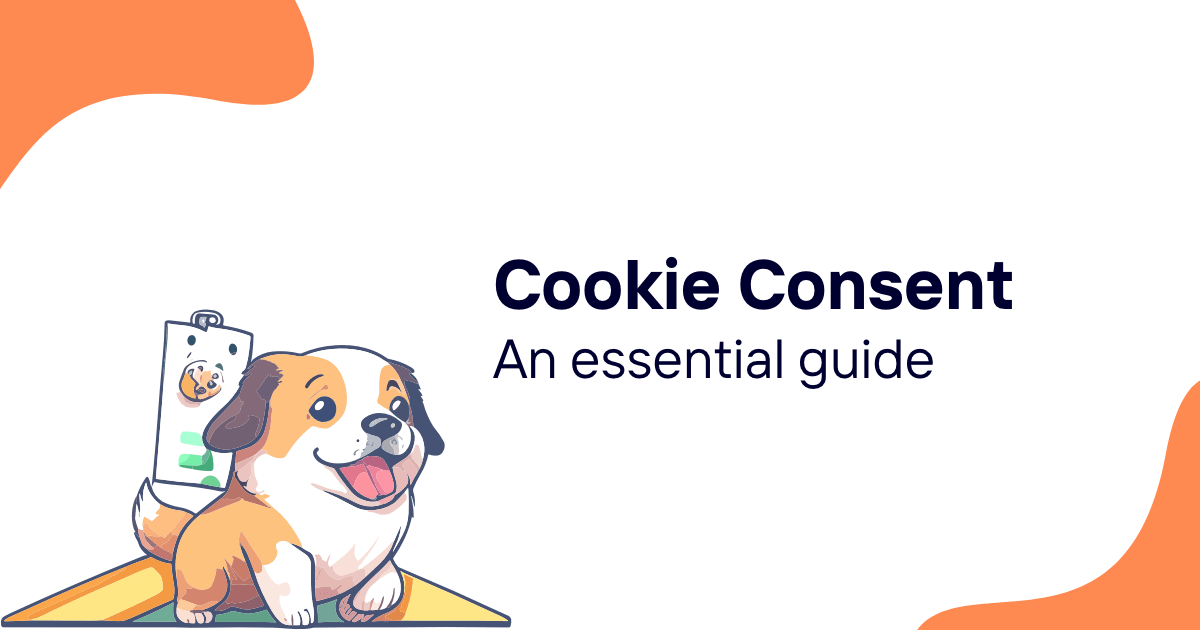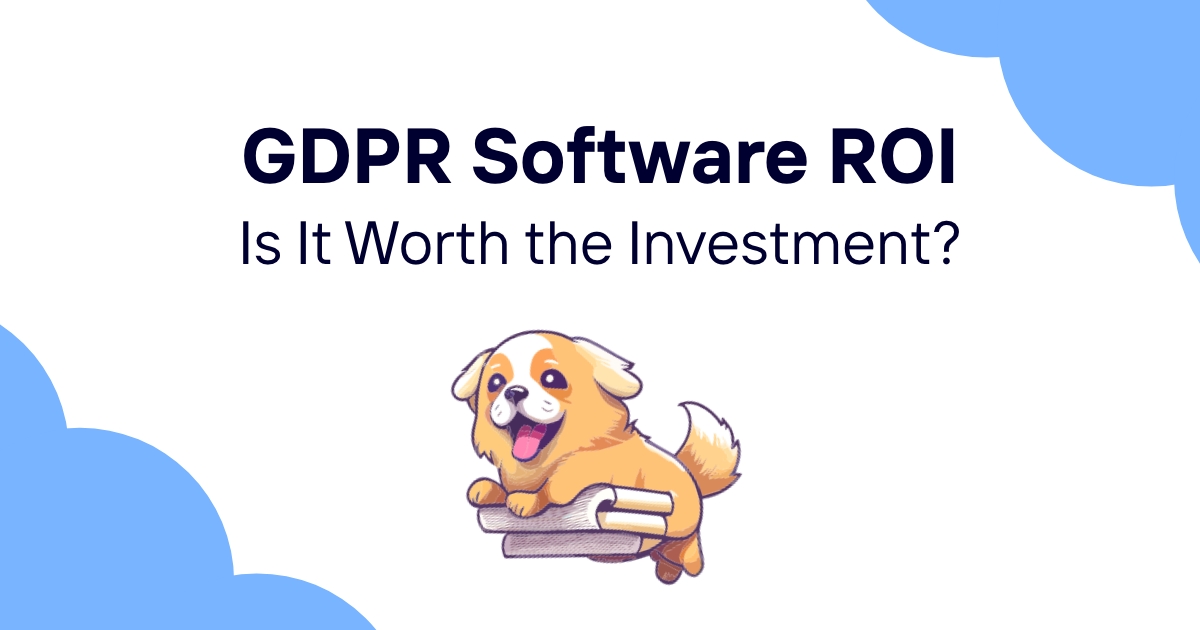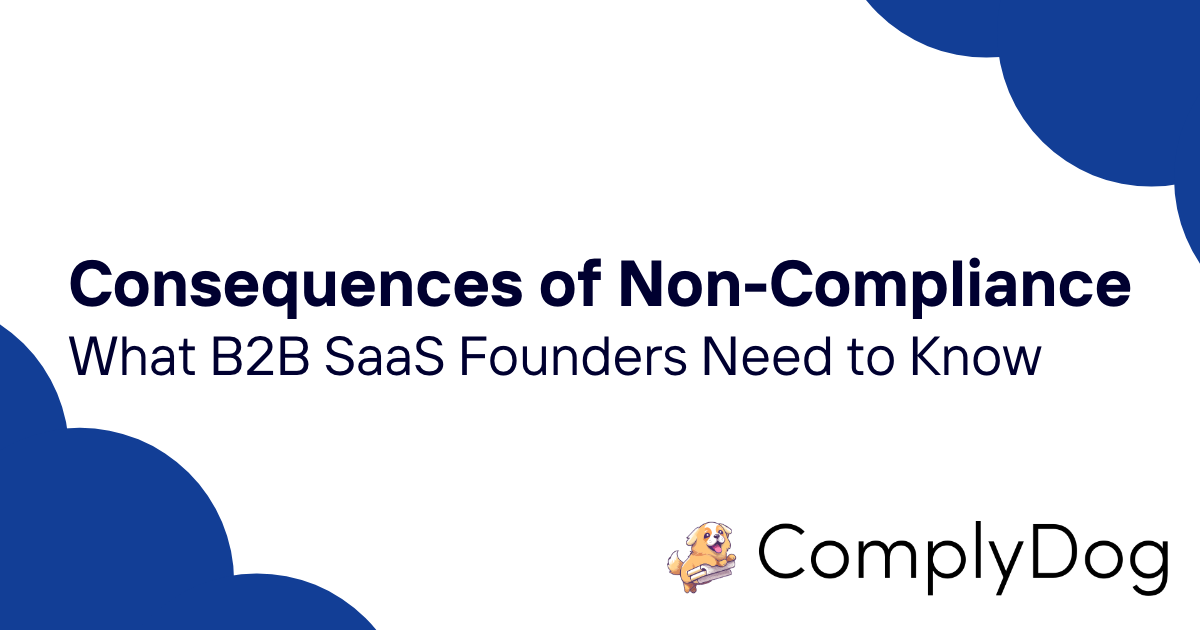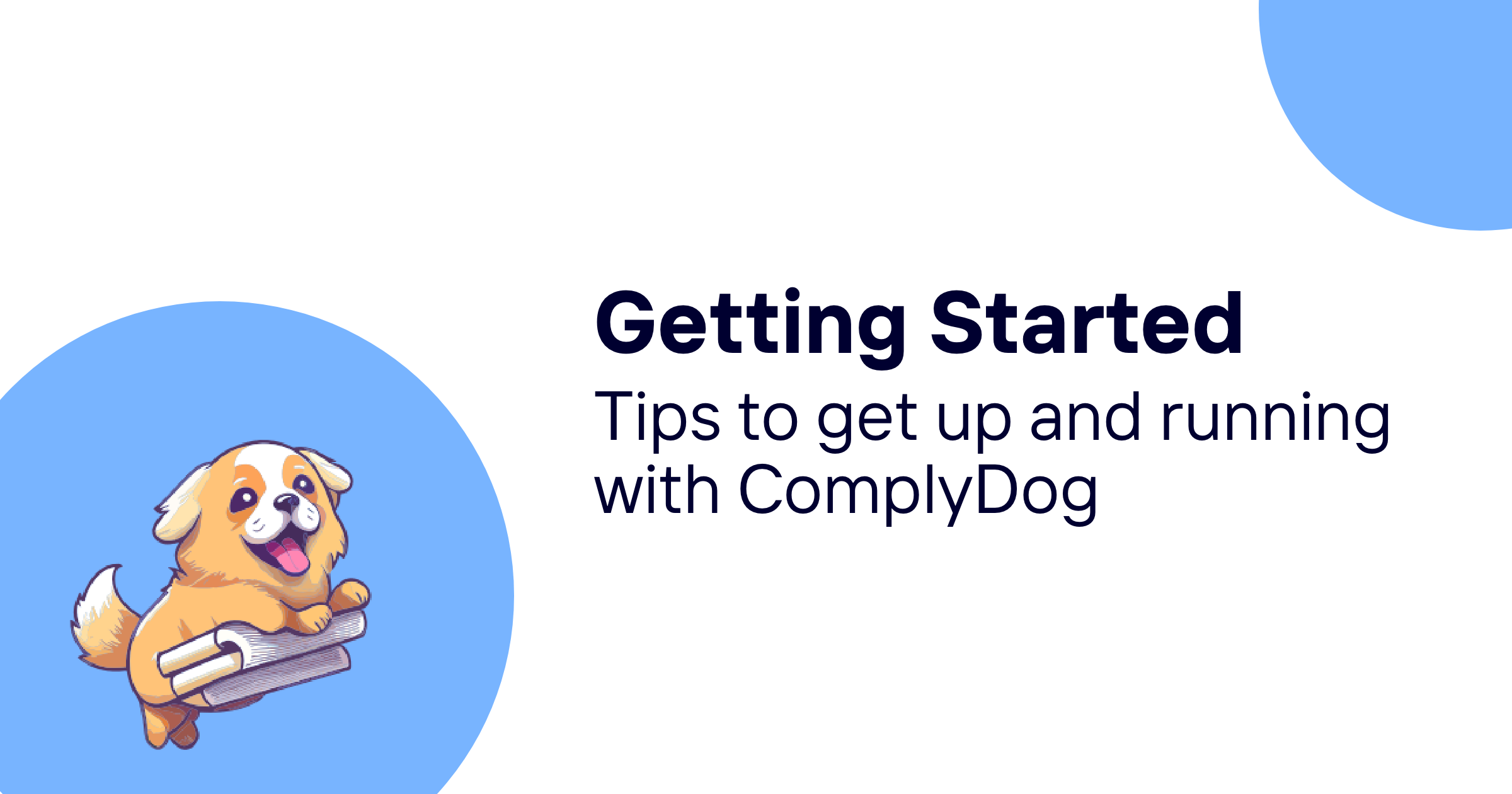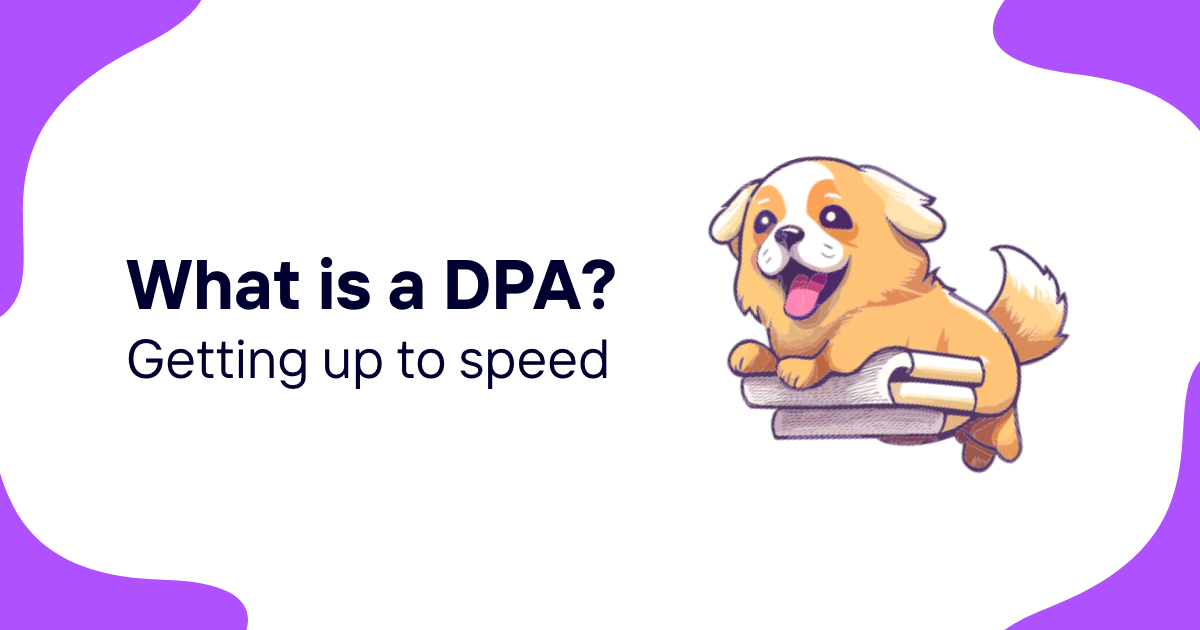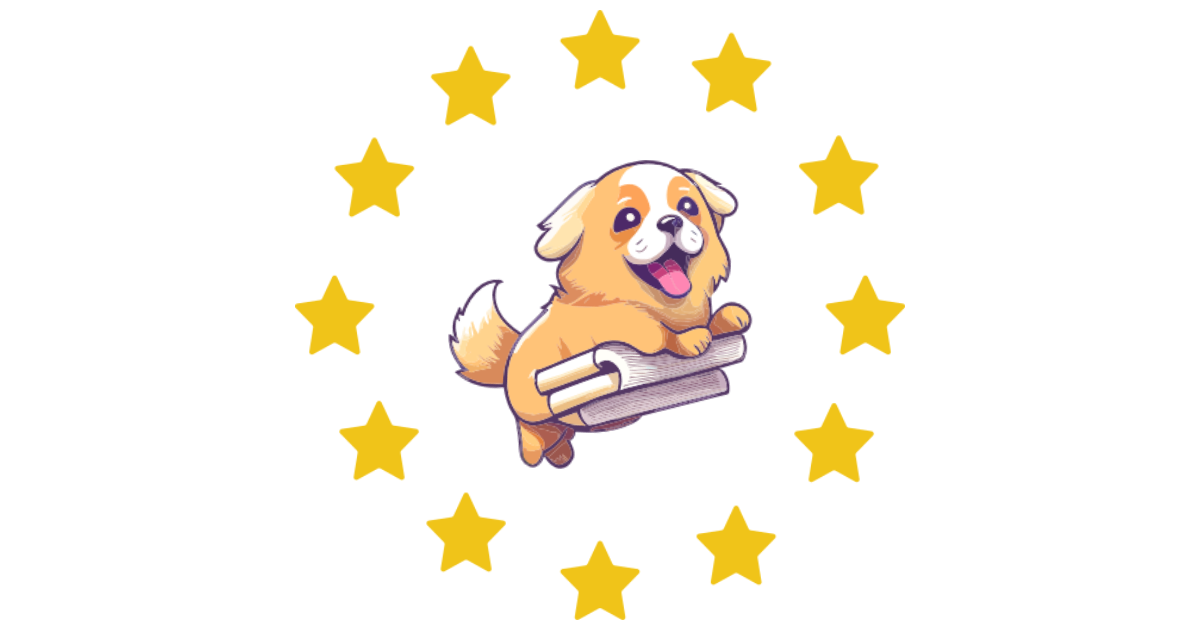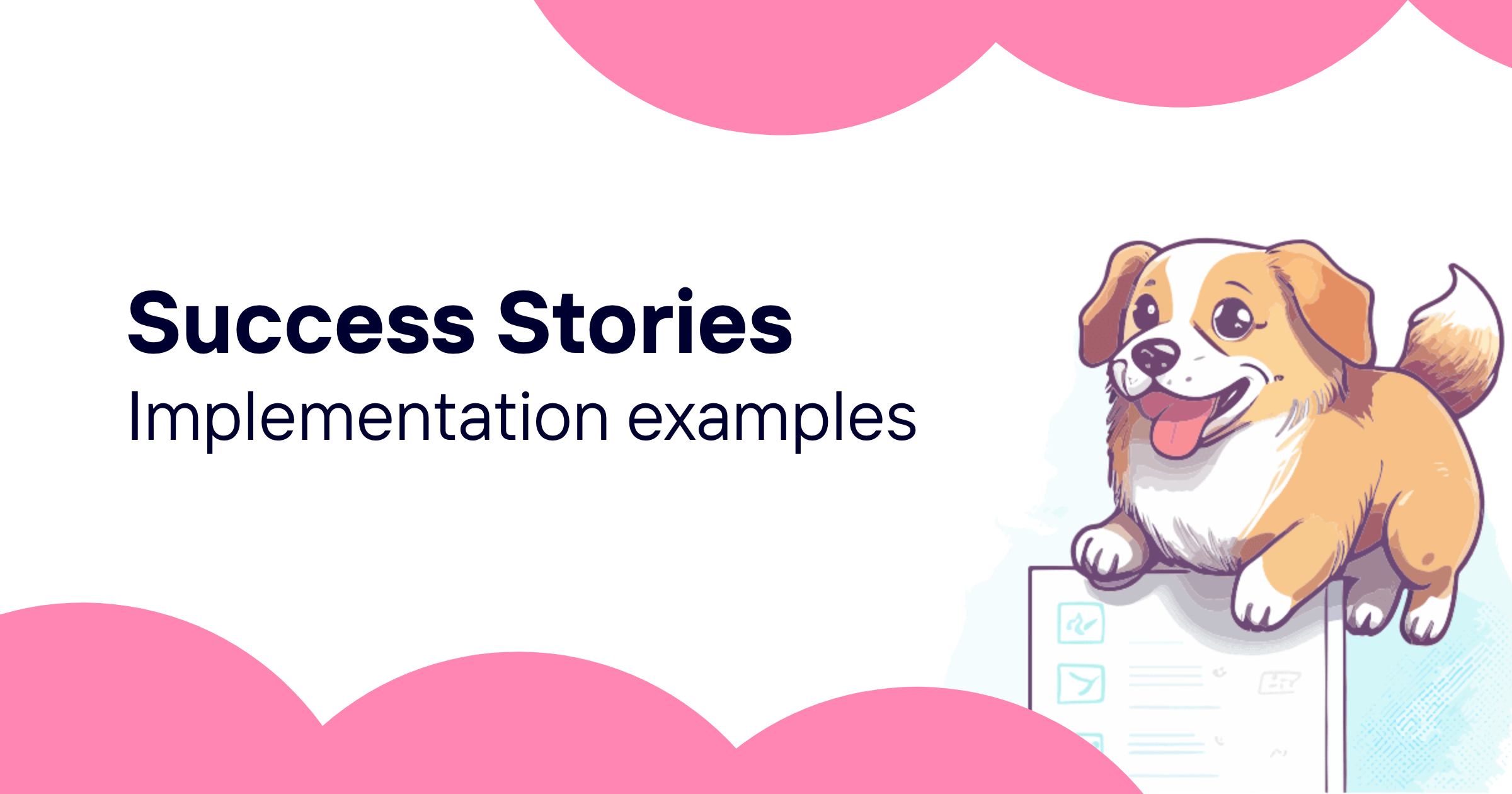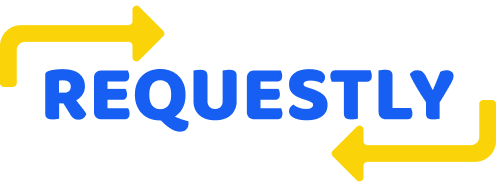Running a healthcare SaaS company means juggling two regulatory nightmares at once. You've got HIPAA breathing down your neck in the US, and GDPR watching every move you make with European data. Miss the mark on either one, and you're looking at fines that could put you out of business.
HIPAA violations can cost up to $1.5 million per incident. GDPR? They'll take 4% of your global revenue. When you're handling protected health information and serving clients across continents, there's no room for guesswork.
The good news is that you don't need to build two separate compliance programs. Smart healthcare SaaS companies find ways to meet both requirements without doubling their workload. Here's how to build a compliance framework that satisfies regulators on both sides of the Atlantic.
Healthcare SaaS Data Protection Requirements
Before you worry about specific regulations, you need rock-solid data protection basics. These aren't optional extras - they're the foundation everything else builds on.
Security Fundamentals You Can't Skip:
- Encrypt everything with AES-256 or better - data at rest, data in transit, no exceptions
- Multi-factor authentication for all users, role-based access controls that actually make sense
- Automated backups with tested recovery procedures (test them regularly, not just once)
- Clear incident response plans that your team can execute under pressure
- Vendor vetting processes that dig deeper than a sales presentation
Healthcare organizations are getting pickier about their SaaS vendors. They want to see your compliance documentation upfront, not after they've already signed contracts. You need systems that can generate compliance reports, track vendor agreements, and show customers exactly how you protect their data.
The documentation burden is real. Annual risk assessments, policy manuals, training records, technical implementation guides - it adds up fast. Companies like ComplyDog help centralize this mess so you can actually find what you need when auditors come knocking.
What You Need to Document:
- Risk assessments that get updated when your systems change, not just annually
- Step-by-step procedures for every way you handle data
- Training completion tracking that proves people actually learned something
- Technical safeguard documentation that explains what you built and why
- Business associate agreement templates that work in the real world
HIPAA vs GDPR: Key Differences for SaaS Companies
HIPAA and GDPR come from completely different worlds. HIPAA focuses on healthcare-specific scenarios, while GDPR casts a much wider net. Understanding where they overlap and where they don't will save you from building unnecessarily complex systems.
Who Has to Follow What:
HIPAA hits you when you're processing protected health information for covered entities - hospitals, clinics, health plans. You become a business associate, which means specific rules about how you handle that data.
GDPR kicks in the moment you process any personal data from EU residents. Doesn't matter if it's health data, employee records, or marketing lists. If they're in Europe, GDPR applies.
Getting Permission to Process Data:
HIPAA gives healthcare providers broad permission to use patient data for treatment, payment, and operations. Your business associate agreement covers you for processing data in support of these activities.
GDPR makes you pick a specific legal basis for every processing activity. For health data, you'll usually rely on vital interests, legal obligations, or explicit consent. You need to document which one you're using and stick to it.
What Rights People Have:
Under HIPAA, patients can access their records, request changes, and ask for restrictions. But they usually work through their healthcare provider, not directly with you.
GDPR gives people more direct rights. EU residents can contact you directly asking for their data, requesting deletion, or demanding you stop processing. You need systems to handle these requests, not just forward them to customers.
When Breaches Happen:
HIPAA gives you 60 days to notify covered entities about breaches. They handle patient notifications and regulatory reporting.
GDPR wants to hear from you within 72 hours of discovering a breach. If there's high risk to individuals, you need to tell them immediately too. This timeline is much tighter and leaves less room for investigation.
Healthcare Customer Data Management for SaaS
Healthcare SaaS platforms juggle different types of data that fall under different rules. You need clear categories so you know which protections apply where.
Sorting Your Data Types:
- Protected Health Information under HIPAA - patient records, billing data, treatment information
- Personal data under GDPR - contact info, user preferences, activity logs from EU residents
- Special category data under GDPR - health information that needs extra protection
- De-identified data - information that's been stripped of identifiers but might still need protection
Map out where each type of data flows through your systems. This isn't busy work - you'll need these maps when people request their data or when auditors want to understand your processes.
How Long to Keep What:
HIPAA typically wants you to keep protected health information for six years. GDPR tells you to delete personal data as soon as you don't need it anymore. When the same information falls under both rules, you need policies that handle the conflict.
You can't delete PHI just because someone makes a GDPR erasure request if HIPAA requires you to keep it. Clear retention policies and good customer communication help you navigate these situations without creating legal problems.
Handling International Data:
If you're storing EU resident data outside Europe, GDPR has specific requirements for international transfers. Standard contractual clauses, adequacy decisions, and binding corporate rules provide legal frameworks for these transfers.
HIPAA doesn't restrict where you store data geographically, but your business associate agreements might. Check your contracts before moving data across borders.
Medical Practice SaaS Compliance Framework
Medical practices need assurance that their SaaS vendors won't create compliance headaches. Your compliance framework should address their specific concerns and common implementation challenges.
Business Associate Agreements That Work:
Every medical practice customer needs a comprehensive business associate agreement. These agreements should cover your specific functionality - where you store data, what processing you do, how you handle breaches.
Include GDPR provisions in your BAA templates when practices serve EU patients. One comprehensive agreement is easier to manage than separate documents for different regulations.
Implementation Support That Actually Helps:
Medical practices often lack dedicated IT staff. Your implementation guidance should include default security settings, user access controls, and audit logging setup.
Focus on common compliance gaps like user account management, password policies, and session timeouts. These seem basic, but they trip up practices during audits.
Ongoing Compliance Monitoring:
Practices need visibility into your compliance efforts for their own documentation. Regular reports on security incidents, policy updates, and system performance help them meet oversight obligations.
Consider building compliance dashboards that track uptime, incidents, and policy changes. Transparency builds trust and reduces the number of compliance questionnaires you'll need to complete.
Patient Data Processing in Healthcare SaaS
Document every way you process patient data, from initial collection through final deletion. Both HIPAA and GDPR require detailed records of processing activities.
Processing Activity Records:
Maintain records that describe the purpose, data categories, recipients, and retention periods for each processing activity. Clearly identify which activities fall under HIPAA versus GDPR requirements.
Some processing activities will be subject to both regulations. Document overlapping requirements carefully to avoid conflicts during audits.
Cross-Border Data Considerations:
GDPR restricts transfers of personal data to countries without adequate protection. HIPAA generally allows PHI transfers to business associates regardless of location.
Implement appropriate transfer mechanisms like standard contractual clauses before processing EU resident data. Don't assume your existing data flows are compliant just because they work for HIPAA.
Managing Data Subject Rights:
Build processes for handling rights requests that might come through practice customers or directly from patients. Clear procedures for identity verification and request coordination prevent compliance mistakes.
Track response timelines and maintain audit trails for all rights-related activities. Integration with customer support systems helps ensure consistent handling across request types.
Healthcare SaaS Vendor Agreement Requirements
Healthcare organizations expect comprehensive vendor agreements that address security and compliance requirements. Develop standardized templates that meet industry expectations while protecting your business interests.
Security and Privacy Language:
Specify the technical safeguards, administrative controls, and physical security measures you implement. Healthcare organizations use these specifications for due diligence and compliance documentation.
Address both HIPAA and GDPR requirements when healthcare organizations serve international patients. Clear language about processing purposes, retention periods, and individual rights prevents contract negotiations from dragging on.
Liability Allocation:
Clearly allocate responsibility for different types of compliance failures. While you should accept responsibility for your own security failures, healthcare organizations remain accountable for their overall compliance programs.
Balanced indemnification clauses that consider both parties' roles create sustainable vendor relationships. Don't try to shift all liability to vendors - it rarely works and creates adversarial negotiations.
Audit Rights and Reporting:
Healthcare organizations often require audit rights to verify compliance claims. Develop audit programs that provide meaningful transparency without disrupting operations.
Third-party compliance reports like SOC 2 audits can satisfy many requirements while reducing individual customer audit burdens. Regular compliance reporting demonstrates ongoing commitment to protection.
Healthcare Compliance Software Integration
Specialized compliance software can streamline your healthcare compliance efforts. These tools automate documentation, track activities, and provide transparency to customers.
Centralized Compliance Management:
Integrated platforms help maintain documentation for both HIPAA and GDPR requirements. These systems track policy updates, training completion, and incident response activities.
ComplyDog provides compliance portal functionality that demonstrates commitment to data protection. The platform enables automated DPA sharing, compliance status updates, and streamlined data subject request handling.
Customer-Facing Transparency:
Healthcare customers increasingly expect self-service access to vendor compliance information. Compliance portals allow organizations to review policies, download reports, and track vendor performance.
Portal functionality should include document libraries, status dashboards, and notification systems for updates or incidents. This transparency builds trust while reducing administrative overhead.
Automated Reporting:
Regular compliance reporting demonstrates ongoing commitment while keeping customers informed. Automated systems can generate standardized reports that address common healthcare compliance questions.
Include metrics like system availability, security incidents, and training completion rates. These quantitative measures provide customers with objective data for vendor risk assessments.
Ready to simplify your healthcare compliance program? Use ComplyDog and build customer trust with a comprehensive compliance portal that handles both HIPAA and GDPR requirements.
